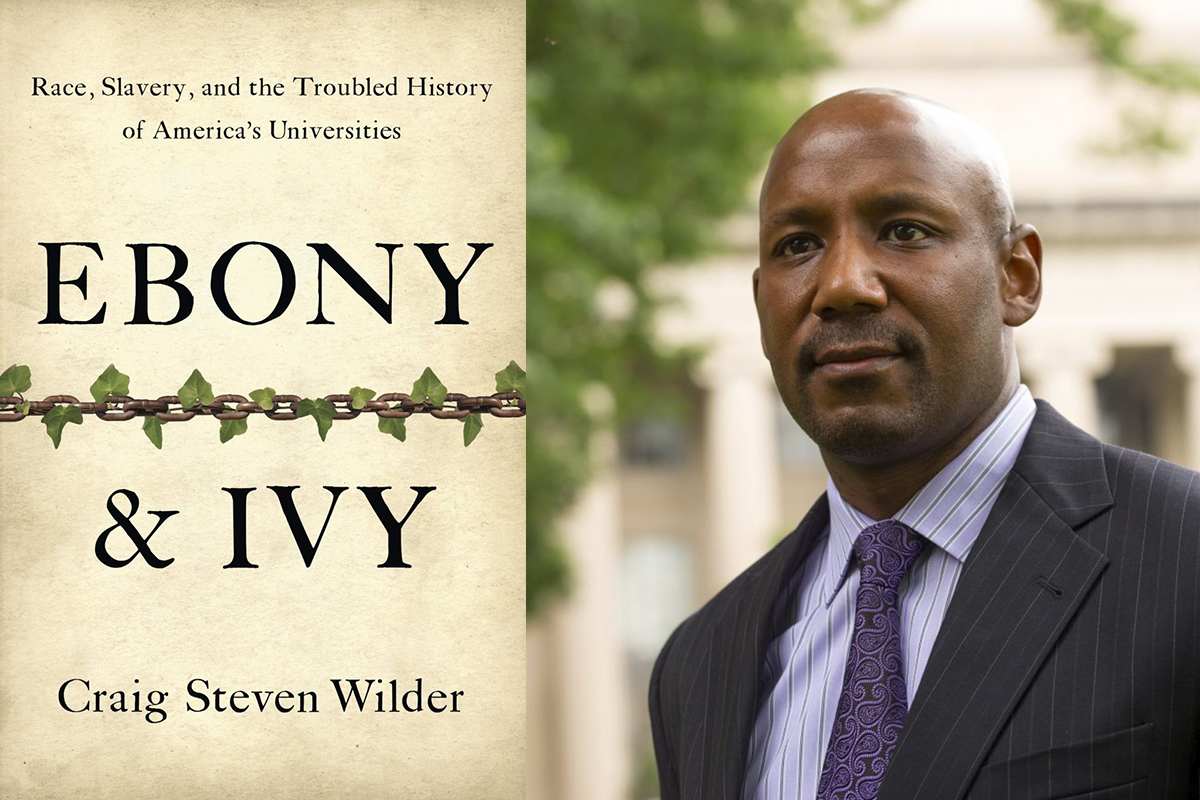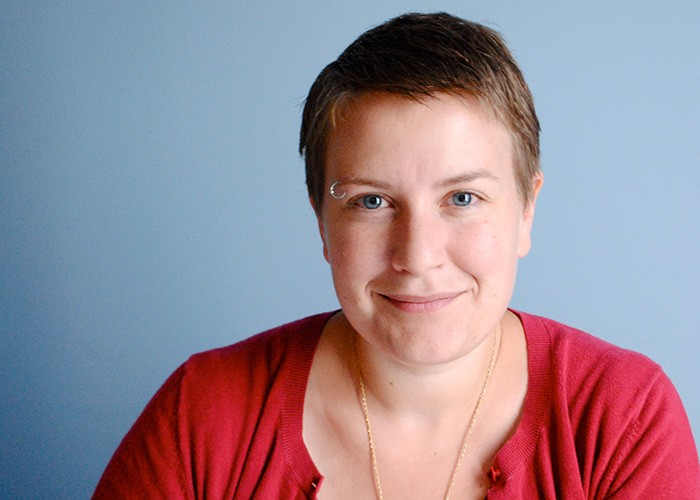Community Read Examines Lasting Legacy of American Universities’ Ties to Slavery
By Gina Myers
 The College of Arts and Sciences' inaugural DEI Community Read took up Craig Steven Wilder's Ebony & Ivy: Race, Slavery, and the Troubled History of America’s Universities.
The College of Arts and Sciences' inaugural DEI Community Read took up Craig Steven Wilder's Ebony & Ivy: Race, Slavery, and the Troubled History of America’s Universities.
September 13, 2021
It’s important to be able to look at one’s own self critically, just as it is essential to turn that critical eye toward the various institutions one is a member of—to consider the positive and the negative, and to identify where and how growth and change may occur.
The College of Arts and Sciences’ inaugural DEI Community Read focused inward in its exploration of the interconnected histories of colonialism, slavery, race and higher education. Launched in the winter term by Associate Dean for Diversity, Equity and Inclusion Amelia Hoover Green, PhD, the Community Read took up Craig Steven Wilder’s Ebony & Ivy: Race, Slavery, and the Troubled History of America’s Universities.
The book examines how the US slave economy and its university system depended on one another—from the slavery-generated money that funded the building of universities to enslaved people waiting on faculty and students at universities; from the children of slave owners being educated at universities to university underwriting of the racist ideas that sustained slavery. Though it was published in 2013, its lessons are timely as universities across the United States grapple with long-standing institutional racism.
The course closed with a virtual visit from Wilder, who is a professor of American history at the Massachusetts Institute of Technology. Wilder shared his inspirations for doing this research and discussed the ways that universities continue to displace communities through development and gentrification.
Hoover Green noted an ironic outcome, given the topic: the Community Read was illuminating for those who participated—mostly people with a Drexel affiliation—but struggled to involve the broader West Philadelphia Community. Nevertheless, she believes this is an important step forward for Drexel.
“We’re working to make the Community Read more broadly accessible,” says Hoover Green. “I want people to know that we are building toward being an institution that is willing and able to talk about and dig into the difficult aspects of our institutional history, and to use those insights to make meaningful changes.”
From learning about this undertaught history to considering its lasting implications, there were many important lessons that Community Read members took away from the reading and weekly discussions.
An Unknown History
 Associate Dean for Diversity, Equity and Inclusion Amelia Hoover Green, PhD, launched the inaugural DEI Community Read.
Associate Dean for Diversity, Equity and Inclusion Amelia Hoover Green, PhD, launched the inaugural DEI Community Read.
Many people in the United States think of slavery as primarily a Southern practice, but Wilder’s book troubles that perception by showing how intrinsic it was to the development of universities and cities in the North.
“There's not some magical divide where the South did slavery and racism and the North is fine,” says Hoover Green. “And I think we've known that, but these specific illustrations make that clear.”
This attention to Northern universities is what intrigued Felice Franklin ’77 about the book. Franklin had previously read Ebony & Ivy in a book group that she runs in Jacksonville, Florida, but she decided to participate in the Community Read to have the opportunity to revisit the work alongside people who were closer to academia.
She discovered the book through a radio interview with Wilder. “He was discussing slavery and American institutions, and they were all Ivy League schools—all schools in the North. The book gives us an opportunity to look at slavery in the North, which is something that people don’t typically look at. If it were not for slavery, those schools wouldn’t exist.”
Ebony and Ivy also lays out a complex, three-way connection between universities, the forced displacement and genocide of Native Americans, and the practice of enslavement. “Universities operated as protectors, defenders and growers of capital,” says Hoover Green. “We kept coming back to the fact that none of us had learned these key pieces of American history in grade school or in high school—and many of us didn’t learn it in college, either.”
Gwen Ljung-Baruth ’21, a political science major who participated in the read, adds, “One thing that really struck me was the strategic role that American universities played in British colonization efforts and how they have continued to play a role in perpetuating systemic racism since then.”
For Ljung-Baruth, this highlighted the fundamentally political nature of knowledge. “I think often we're taught to view knowledge very objectively and to view universities as this objective disseminator of knowledge,” she says. “So this really drove the understanding that there is subjectivity to knowledge and we have to question what are the sources of this information. What's the purpose of teaching it? I think learning to question that, and to think about those potential ulterior motives, especially throughout history, is something that is really important.”
During Wilder’s visit, he discussed that while many institutions have recently begun to acknowledge their role in slavery, they turn it into an academic exercise rather than addressing the moral consequences of their involvement.
Ljung-Baruth notes, “[The universities] view it more as a question of how do we fix this PR problem, instead of asking, how do we actually reckon with this horrible history that our institution made worse?”
A Lasting Legacy
Though the history Ebony & Ivy covers ends before Drexel’s founding, Community Readers drew on its themes to consider Drexel’s own complicated relationship to the West Philadelphia neighborhood it resides in.
It was a goal for Hoover Green to foreground what lessons Drexel could learn institutionally and discuss ways in which the University might move forward in its community relationships.
“We talked about the parallels, continuities and discontinuities between the ways that enslavement and colonization happened, and the ways that universities in more contemporary periods have participated in gentrification, development and displacement,” she explains. “We also talked a lot about PILOTs—about the fact that as nonprofit institutions, universities in the Philadelphia area are funded by our neighbors, who can't themselves in many cases come to Drexel because of that exact inequitable tax system.”
For Camille Coleman, MPH, program manager for the section of hematology at St. Christopher’s Hospital, Wilder’s visit to the class shed light on how this legacy continues to influence present-day operations at universities. “Discussing [Wilder’s] book in the context of present-day higher education provided insight as to how university and college communities can engage in conversations with their respective institutions about its past and present, and to develop actionable steps to help shape its future.”
Franklin, who is an active member of the Drexel University Black Alumni Council, feels universities should be aware of their impact on surrounding communities. “How can we incorporate that community into the university? I don’t mean the footprint, but how can we embrace the community that we are a part of rather than think about how we need another building?” she asks. “In urban areas, universities go in and knock down houses, community centers and schools. The neighborhood becomes unrecognizable to people from there.”
For Drexel, she would love to see both more kids who live in the University’s footprint be brought into the University for activities and for Drexel to recruit more students from the community and make it possible for them to attend.
Expanding Perspective
Overall, the participants enjoyed the Community Read, especially getting the opportunity to discuss Ebony & Ivy among a diverse group of people who brought many different experiences to the meetings.
“I think with this book there's so much information that most of us had never really heard before or learned about in school, so it was really interesting to be able to discuss the book with a big group of people,” says Ljung-Baruth. “The people that participated ranged from alumni to people with different life experiences, which really contributed to the diversity and the breadth of experiences that we had talking about the book.”
Coleman agrees, “The many perspectives and thoughts shared about the weekly reading is what I appreciated most about the group discussions. Additionally, the group discussion was a safe space for engaging in discussions about topics that could be very polarizing.”
She would definitely recommend others to participate in a future Community Read. “The value of participating in the Community Read is engaging with members who we most likely would not have interacted with outside of the Community Read platform. The experience was informative and rewarding.”
Check back for more information about the next Community Read, which will kick off in January 2022.